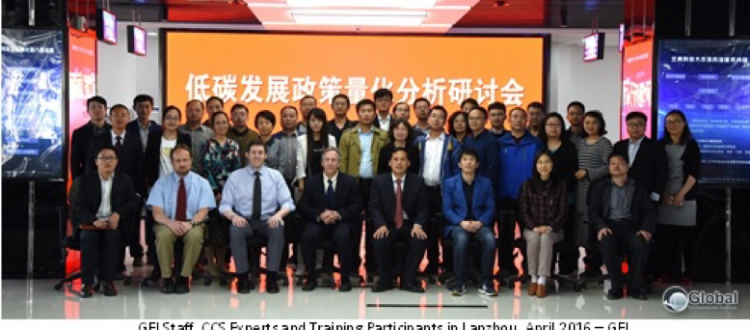Low-Carbon Development Goes Westward
Lanzhou, China (April 20, 2016) – As China’s eastern metropolises of Shanghai, Shenzhen and Beijing urbanize, the country’s economic development is shifting west into provinces including Gansu. The Western regions present new challenges for economic development, which has increasingly relied on fossil fuels like coal, oil and petrochemicals, as it is necessary to protect ecological resources, like the Tibetan plateau and Gogi Desert, and adapt to a rural, often migrant, population.
Gansu’s officials are currently facing three major tasks:
- first, meet the carbon emission targets and renewable energy development goals allocated by the next period of the Chinese government’s 13th Five-year Plan;
- second, provide more support for local people’s health and the environment as the region gains economic and personal wealth;
- third, maintain economic growth.
For many officials, achieving economic targets seems contradictory to achieving sustainable low-carbon targets, given that development has depended on energy-intensive and high emission industries.
To meet all three goals, the officials are seeking out new, effective policies and technology solutions and learning from international or advanced domestic experience.
This April, GEI’s Energy and Climate Change team along with Center for Climate Strategies had the opportunity to train the Lanzhou officials on their Low Carbon Policy Quantitative Analysis Toolkit and build their capacity to make and implement policies that can achieve low carbon and economic growth.
GEI’s Sustainable Development Solution – Training on our Low Carbon Toolkit
GEI’s Ms YU Qingchan, Dr. XU Shengnian and Ms CUI Nanying, with Center for Climate Strategies (CCS) experts, Mr. Steve Roe, Mr. Scott Williamson and Dr. David von Hippel, conducted a “Training Seminar on Low Carbon Policy Quantitative Analysis Toolkit” at the Carbon Emission Exchange from April 11-13 in Lanzhou.

Mr. Dong Yi from Climate Change Division of Gansu Provincial Development and Reform Commission attended the seminar and recognized the importance of the training. In fact, he expressed that quantitative analysis tools are crucial to decision-making and that the provincial research institutes need to enhance their capacity to conduct quantitative analysis to provide technical support to decision makers.
The seminar included training sessions on the Toolkit components, including GHG emission inventory and forecast, policy design, sector-based cost-effectiveness analysis of individual policy, as well as a regional macro-economic impact assessment based on REMI PI+ model (Chinese version).
Plus, to help the trainees comprehensively understand the Toolkit methodology and application, GEI and CCS presented case studies on cement industry and facilitated break-out discussions groups based on four sectors, namely, energy supply, industrial, transportation and building. All participants were quite interested in the training and engaged in deep discussions on how to adapt the toolkit into local contexts.
More than 50 technical experts from four provinces attended the training and represented institutes including Gansu Carbon Emission Exchange, Lanzhou University, Lanzhou University of Technology, Yunnan Provincial Economic Information Center, Ningxia Clean Development Mechanism Center, and Hunan International Engineering Consulting Corporation.
What’s next for Gansu
Unique solutions are hard to find for Gansu. According Ms YU, clean power development is very likely to be the trend in the region but certain problems are evident:
“Balancing China’s western development and integrating regional development strategies is crucial when designing any low-carbon and environmentally friendly solutions,” said Ms YU.
Ms YU explained that in order to export the clean electricity to eastern China it will be necessary to construct trans-province electricity grids at the same pace. Doing this is, however, an administrative challenge as China will need to establish a national-level mechanism for coordinating multiple stakeholders like governments, grid corporate, and power plants in different provinces. These stakeholders can then finance, construct and operate the transmission infrastructure that can efficiently utilize renewable power.
GEI’s work in Gansu in April 2016 is a product of the MOU signed in late 2015 between GEI and Gansu Carbon Emission Exchange for strategic cooperation on addressing climate change and promoting low-carbon development. The first step of this MOU is to host the training, and the second step is to provide technical assistance to low carbon city planning. This second step will most likely occur in Jinchang City, which has a low-carbon city pilot approved by the NDRC, within Gansu Province. Following the training, GEI will work with CCS experts to support Gansu Carbon Emission Exchange to complete low-carbon policy analysis and related policy research projects.

